A new catalyst allows selective production of hydrogen and acetic acid from ethanol, with no direct carbon dioxide emissions. The researchers behind the work believe that the reaction could now compete with current industrial processes for producing the chemicals.
Around 100 million tonnes of hydrogen per year are used in industry for applications such as ammonia production and removal of sulfur from petroleum. At present, the vast majority comes from fossil fuels, mainly by steam reforming of methane – which is itself strongly endothermic. Reducing the carbon footprint of the chemical industry, therefore, requires a greener source of hydrogen, and some chemical engineers are looking to bioethanol. The principal routes by which ethanol can generate hydrogen are partial oxidation, in which the ethanol reacts with oxygen, and full steam reforming, in which it reacts with water. In both cases the carbon and oxygen go to carbon dioxide.
In the new work, researchers at Peking University in Beijing, together with colleagues elsewhere in China and Graham Hutchings in Cardiff, UK, demonstrate selective partial steam reforming. This instead produces acetic acid – which is needed for producing other chemicals such as acetates – as the oxidised byproduct. ‘This reaction is not totally new,’ says physical chemist Ding Ma, who headed the research. ‘But in the past people have not been able to achieve high selectivity towards acetic acid, or they’ve used a base so they go to the acid salt rather than the [acetic] acid itself.’
The researchers used a catalyst supported on molybdenum carbide, which Ma’s group and others have previously shown to have unprecedented ability to activate water molecules at low temperatures. To activate ethanol, the researchers added platinum and iridium. ‘It turns out platinum is more active [than iridium] for ethanol reforming … However, platinum tends to aggregate into small clusters,’ says Ma.
Metal–metal bonds in these clusters can activate and break the ethanol’s carbon–carbon bonds, leading to the generation of carbon dioxide or methane. Iridium, however, reacts very strongly with the support, dispersing atomically and helping to block nucleation sites for platinum clusters.
Spectroscopic imaging showed that, as a result, both metals were almost atomically dispersed on the surface. This meant that only one of the ethanol substrate’s carbon centres was activated, and so the reaction produced almost no chain breakage.
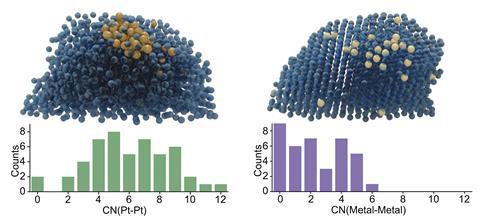
The researchers found that their reaction was less prone to side reactions than either partial oxidation or steam reforming. At 270°C, they achieved an acetic acid selectivity of 84.5%. A preliminary techno-economic analysis leads the researchers to conclude that the reaction could be competitive with current processes for producing the chemicals, although Ma says that ‘in future if one could reduce the amount of iridium or potentially replace the whole catalyst with non-noble metals it would be much better.’
Fabio Ribeiro, who co-directs Purdue University’s engineering initiative on leading energy-transition advances and pathways to sustainability, believes the study may be scientifically interesting – particularly if it offers novel insights into reaction mechanisms or catalysis. However, Ribeiro has reservations about the process’s commercial viability.
‘At current prices, the total value of the hydrogen and acetic acid produced is less than the cost of the ethanol and process water,’ he explains. ‘How can you make a profit if your final products are worth less than your starting materials?’
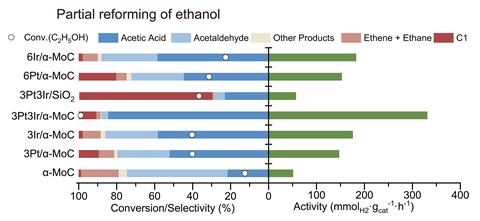
Ribeiro, who also directs the US National Science Foundation’s Center for Innovative and Strategic Transformation of Alkane Resources, adds that bioethanol production typically requires fertiliser, which itself usually relies on ammonia, suggesting that the feedstock is unlikely to be carbon-neutral. Furthermore, even if all the world’s ethanol were devoted to this reaction, it would only meet a small fraction of global hydrogen demand while producing an excess of acetic acid far beyond current needs. ‘When it comes to truly green hydrogen, the best route is water electrolysis powered by renewable energy, which is already cost-competitive with steam methane reforming in some regions,’ he says.
Responding to the concerns about the economic viability of the process, Ma points out that the global prices for both ethanol and acetic acid can vary significantly on an annual and regional basis, ‘making the profitability of any future version of this process highly sensitive to change’.
‘For instance, over the past ten years, prices in China and the US have shown considerable different trends and fluctuation,’ he notes. ‘In the US, ethanol is much cheaper than acetic acid due to the availability of grain-derived ethanol. Conversely, in China, coal-derived methanol is abundant, resulting in lower acetic acid prices.’
Ma also acknowledges that water electrolysis is the most viable approach for making hydrogen, but says that the energy efficiency of that process is low. ‘Our approach shows that there is scope for alternative ways to make green hydrogen together with other chemicals, which is also suitable for distributed small-scale manufacture,’ he adds. ‘Besides, this process would also contribute to defossilising current acetic acid production route. Indeed, the future will not be “a one size fits all” for chemical manufacture and our new approach, which is as yet in its infancy, shows there is a way forward.’
References
M Peng et al, Science, 2025, DOI: 10.1126/science.adt0682





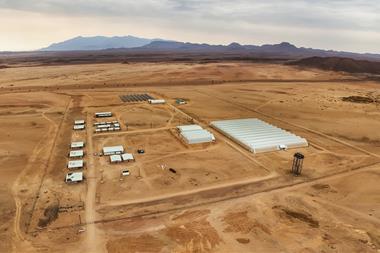
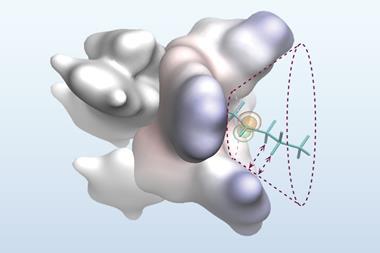
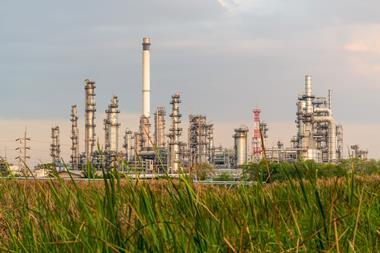
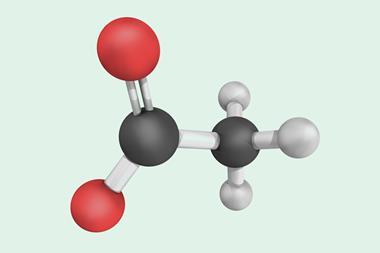
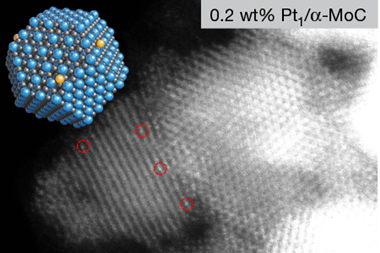
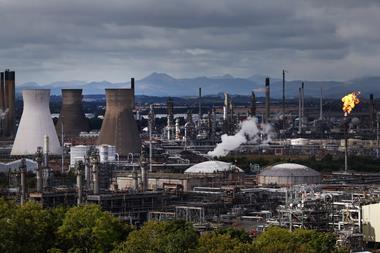

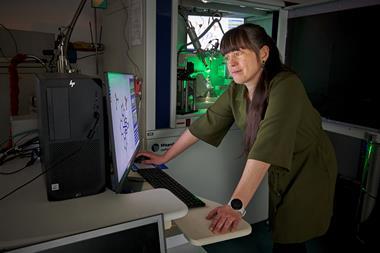




No comments yet